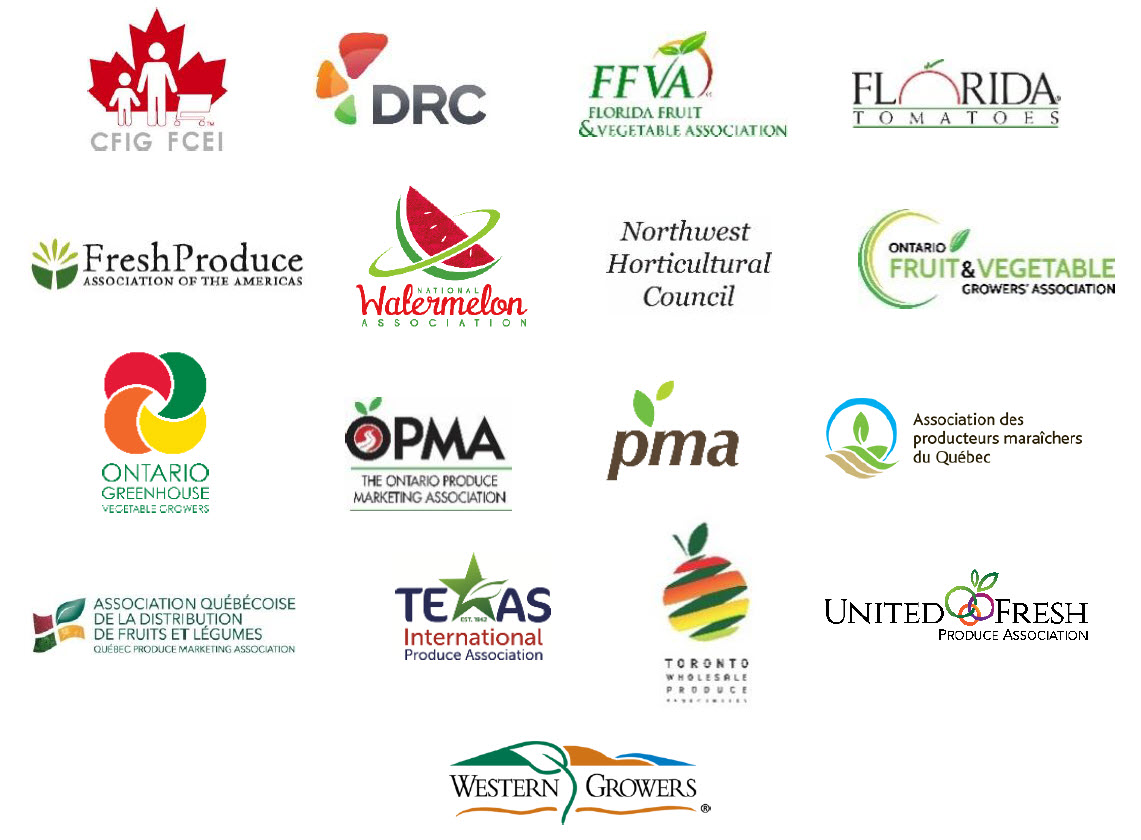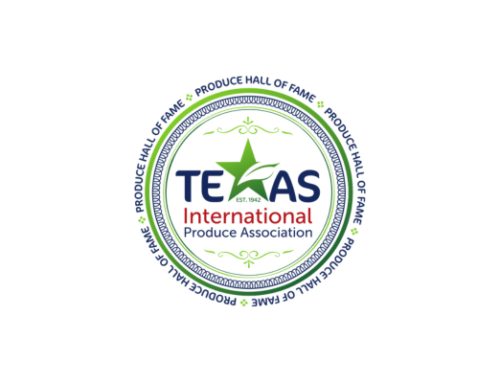On behalf of North America’s fresh produce industry, we are calling for urgent government action to address significant ongoing supply chain disruptions with impacts to our food systems, economies, and ultimately individuals and families across the continent and around the globe.
The COVID-19 global pandemic has created unprecedented public health, economic, and logistical challenges for communities and supply chains around the world. The fresh fruit and vegetable industry has been no exception. From the seed to the dinner plate, our sector has continued to work daily to find solutions to mitigate the impact of the outbreak and ensure consumers continue to have access to our safe, healthy and nutritious products.
Almost two years since the start of the pandemic, substantial increases in costs and delays along the supply chain threaten our food security and the long-term economic viability of the North American fresh produce sector. It is important to note that these costs cannot be fully borne by the industry and will ultimately be passed to consumers. Sadly, these increases, which are already being felt by the end consumer are likely to escalate, affecting most those who can least afford it.
Examples of ongoing supply chain disruptions include:
- •Crippling port congestion – Gridlock at all major North American ports has resulted in lines of ships waiting to dock and containers stacked high waiting for unloading and pick-up. For our highly perishable products, long delays at port can result in loss of product, sales and ultimately food waste. Significant delays in receiving equipment, building materials and other inputs also serve to threaten upcoming growing seasons.
- According to Goldman Sachs, more than 30 million tons of cargo are waiting for delivery.
- Even once a vessel berths, it can take days to discharge the containers.
- Soaring demurrage and detention fees resulting from port delays cannot be sustainably absorbed by the industry.
- Long wait times for drivers picking up containers result in further congestion and delays in delivery.
- For Canada and parts of the United States, it is important to note that much of our 2021 growing season has ended and the busier import season is set to begin.
- Delays and exploding costs in container shipping – While major international shipping companies have been sending empty containers back to Asia and posting record profits, weeks-long shipping delays have resulted in major losses of product and sales for the North American industry. Coupled with exponentially growing container costs and a limited number of refrigerated containers, this situation creates serious challenges for the fresh produce industry and our countries’ food security. Governments must work together to provide greater oversight of international ocean carriers and ensure fair and ethical practices to support the continued flow of goods.
- The cost of shipping containers has tripled or more in the past year, with estimates increasing from $3000 per container to $15,000 to $18,000, and even as high as $25,000 per container.
- Due to the highly perishable nature of our commodities, there are already a limited number of carrier companies that accept fresh produce shipments. One of the largest of these has recently announced it will no longer carry fresh produce due to the increase in claims being made.
- Despite the significant delays in product delivery, shipping companies are holding container rates for shorter periods of time. These companies have also begun cancelling bookings, only to reschedule them at a higher rate.
- Cascading effects of inconsistent product delivery – When a significant delay in receiving perishable product is followed by receiving a large amount at once, a string of new issues and costs arise, including arranging distribution and sourcing additional labour required to re-grade and re-package salvageable product to recover sales and avoid waste. Barriers to exports resulting in more domestic product remaining in North America also have the potential to create new supply and demand challenges, including decreased profitability to all domestic supply chain partners.
- Many aspects of our supply chain are designed to penalize late or lengthy deliveries. For example, distribution centres charge fees for missed appointments or changes, carriers charge fees for detention and demurrage, and upstream distributors charge fees for partial or unfilled orders. This further inundates the supply chain with additional costs.
- These ongoing disruptions have brought about unprecedented issues over extended periods of time, unforeseen challenges that many contracts simply did not account for. This has resulted in an increasing number of legal proceedings over contract disputes, placing further stress on the supply chain.
- Continuing labour shortages across the supply chain – The significant labour shortages in the fresh produce industry have extended from the farm throughout the supply chain, and are impacting everything from planting and harvest, to packing, transportation and
retail/foodservice. Governments have a key role to play in incentivizing workforce re-engagement and facilitating access to both domestic and international labour.- The challenges agricultural employers are facing in attracting workers is exacerbated by procedural delays and COVID-19-related protocols.
- The National Council of Agricultural Employers recently cited a report that in Q2 of 2020 more than 100,000 job openings were posted in the U.S. agriculture sector which called for workers with no or limited experience; even so, Department of Labor records show that only 313 of these openings were filled by domestic workers.
- The American Trucking Association has estimated that the U.S. alone has a shortage of around 80,000 truck drivers, and the driver shortage tops the American Transportation Research Institute’s list of Top Industry Issues. The scarcity of commercial truck drivers is made worse in the produce industry, as drivers may opt to take on less urgent, non-refrigerated loads rather than the urgent, time-sensitive and highly temperature-controlled loads necessary in fresh produce.
- Growing input shortages – From fertilizer, crop protection products and greenhouse building materials, to pallets, cardboard and packaging, the fresh produce supply chain is experiencing increasing shortages and rising costs in inputs that are critical to our sector, with impacts being felt now and threatened for the future.
- In spring 2021, lumber shortages drove wood prices up nearly 350%, resulting in a pallet shortage that lasted for nearly six months. This shortage had significant impacts on our sector, as fresh produce cannot move without pallets, and fresh produce’s status as a low margin item, our industry was the last to receive new pallets from suppliers when they finally became available.
- In summer 2021, prices for paper ‘pulp’, the raw material used to make boxes, were reported as being as much as 40% higher, year-over-year, which has resulted in a massive increase in the price of cartons – the primary shipping container for fresh produce.
- Fertilizer costs have risen by more than 20% over the past year, with China’s recent announcement of restricted energy consumption in key phosphate production regions leading to anticipated shortages headed into the 2022 growing seasons.
- The Canadian greenhouse sector has reported delays of more than 8 months in receiving critical building materials, posing a major barrier to preparations for the next growing season.
- Stockpiling of product by consumers – While the issues outlined above pose significant concerns, it is vitally important that they are not further exacerbated by consumer panic buying or stockpiling of goods. Every effort must be made to address supply chain disruptions while also clearly communicating this to the broader public.
In the early days of the pandemic, our governments took swift action to invest in food systems and to work together to keep supply chains moving. The situation we now face echoes some of the challenges we saw in the spring of 2020, with the added complications of heavier border traffic, consumer purchasing habits that have been significantly increased over the course of the pandemic, and government support programs that are winding down or have ended.
We cannot emphasize strongly enough the need for our governments to work together to address these issues in a multi-lateral and holistic manner. The examples outlined above demonstrate clearly the complexity, interconnectedness and dependencies of our supply chain and the challenges we face. It is imperative that governments work urgently with all parts of the supply chain to mitigate the serious threats of food insecurity and food shortages. These multi-faceted problems will not be resolved overnight and delays in course correction are likely to compound and further complicate the situation.
Simply put, without multilateral engagement to find solutions, these issues will create long lasting impacts to the detriment of all North American economies. These include: bankruptcies, legal disputes, industry consolidation, inflation, inaccessible food supplies, and many more. Time is against us, and the necessity of addressing these challenges now cannot be understated.
Our organizations stand ready to work with governments and partners throughout the supply chain to ensure a path forward that enables the continued flow of our essential goods.




